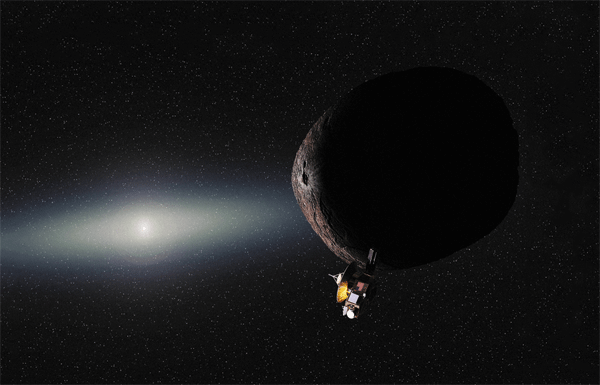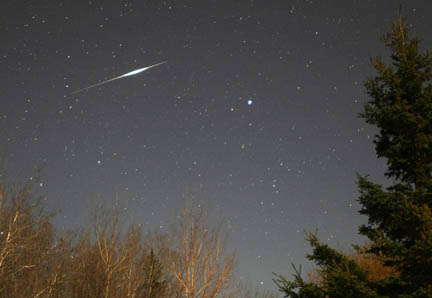
Explore the Night with Bob King
How to See Freaky Starlink "Cluster Flares", Plus the Latest on Comet Lemmon
Alien invasion or flares from satellites in multiple orbits? It depends on your point of view. We also check in on Comet Lemmon, poised to possibly reach binocular-visibility.

SpaceX Launches First Volley of Starlink Satellites
The 60 Starlink satellites parading across the sky make an incredible sight, but some skywatchers wonder at what cost to the night.

Watch International Space Station Flybys All Night Long
The annual International Space Station marathon viewing season begins later this week, when skywatchers in the Northern Hemisphere can watch up to five successive ISS passes in one night.

How to “See” Interstellar Space Probes
So far, humans have sent five probes into space that are or will go far beyond the solar system: the Pioneers, the Voyagers, and New Horizons. As an exercise in fun, here's how you can find those probes' locations on the sky.

SpaceX Launches Orbiting "Sculpture in the Sky" / Comet Update
An art sculpture achieves orbit, 46P/Wirtanen becomes a naked-eye comet, and C/2018 V1 makes one last good pass.

Spice Up Your Space Station Watching
The annual International Space Station marathon is underway with multiple passes visible each night. Here are some fun and unique ways to see and share it.

Humanity Star: Bright Idea or Dark Sky Nemesis?
The launch of the Humanity Star has some fuming, others smiling, at the prospect of seeing a bright, new satellite. What do you think?

How to See and Photograph Geosynchronous Satellites
Dozens of satellites are busy day and night, beaming your favorite TV and radio programs from more than 35,000 miles away. Here's how to tune into them.

Satellite Tracking Tool: Track the ISS & Hubble
The International Space Station passes over virtually all of Earth's populated areas, and you can spot it easily with your eyes alone — if you know where and when to look for it.

Satellite Transit Tool: Spot ISS Transits of the Sun and Moon
The International Space Station often passes close to the Moon, Sun, and naked-eye planets. Use this tool to plan viewing these close encounters.

New Satellite "Mayak" Might Light Up the Sky
Russia's first crowd-funded satellite, named Mayak (Russian for "beacon of light"), promises to be the “brightest object in the night sky next to the Moon.”

Get Your Iridium Fix Before It's Too Late!
The shock and dazzle of Iridium flares will soon be a thing of the past. Here's how to make the most of seeing them before they're replaced by a new generation of satellites.

Predictive Prowess: See an Iridium Flare
Channel your inner superpower by looking up at the night sky precisely when a dazzling blaze of light is beamed to Earth from outer space.
Space-Station Frenzy
For a few days each May, you might see the International Space whenever it passes overhead throughout the night.

How to Catch an Iridium Flare
These communications satellites can briefly outshine Venus as they spray the ground with reflected sunlight.

Take a "Sat-seeing" Tour
It’s a bird! It’s a plane! It’s the International Space Station! Learn how to spot Earth's artificial satellites.
Have You Been Flashed By Iridium?
The Iridium satellites' antenna arrays are almost perfect mirrors. And when they catch the Sun just right — wow!
